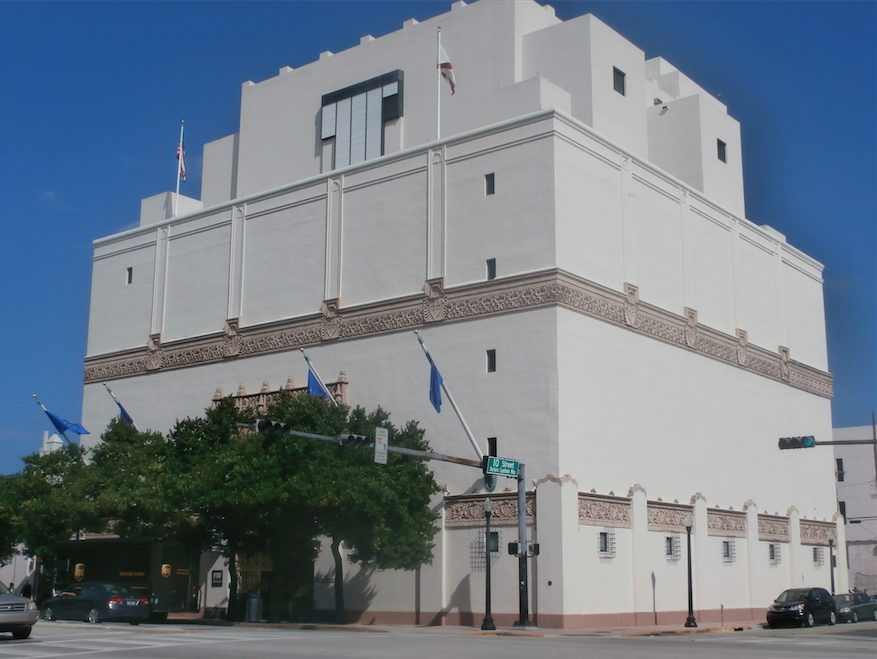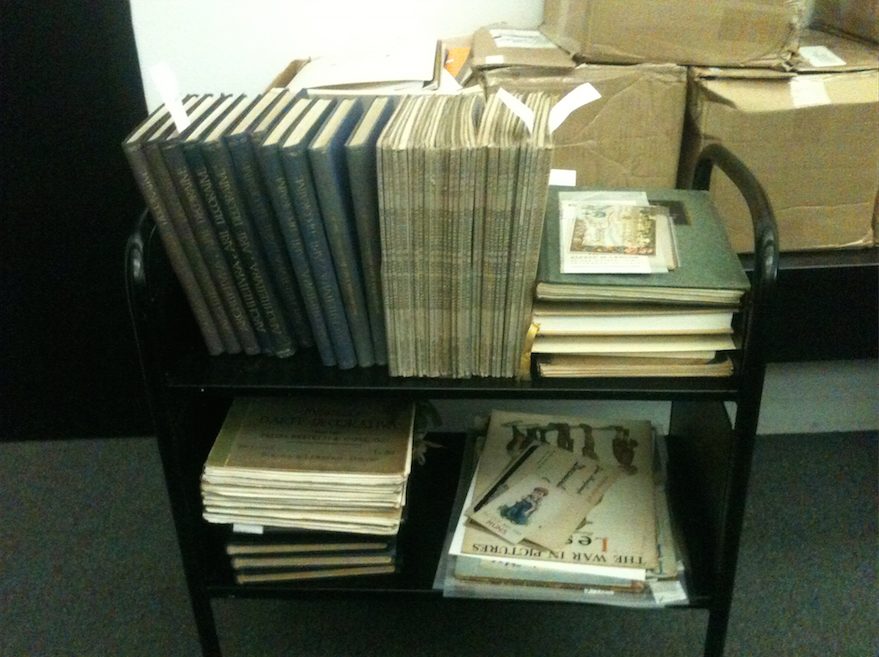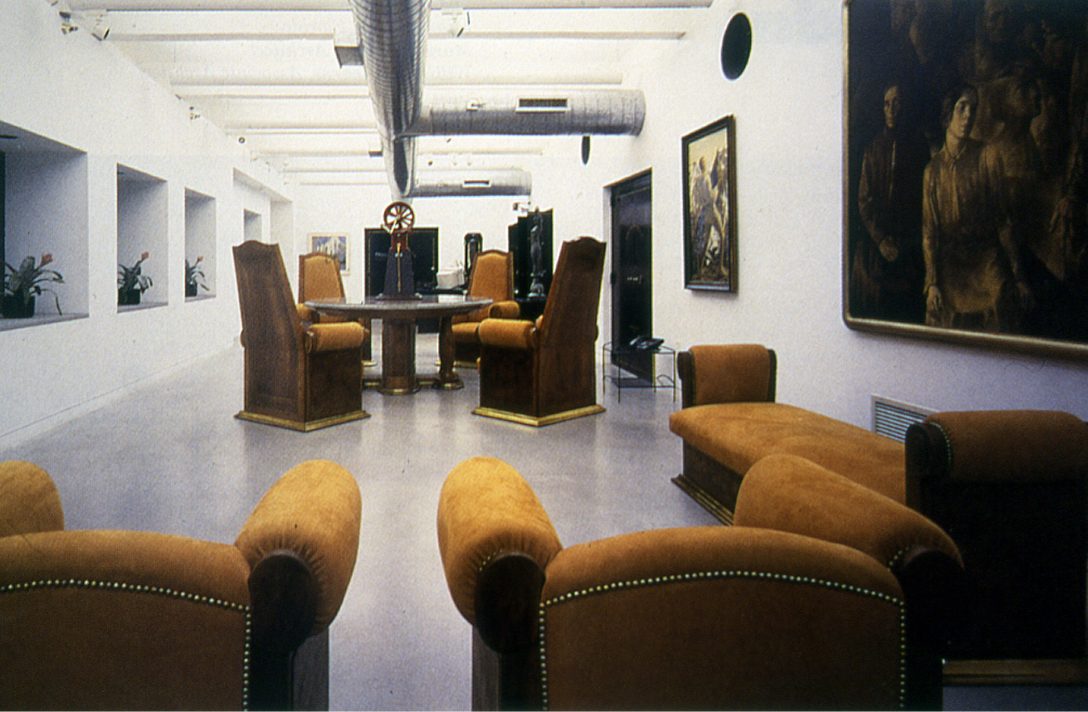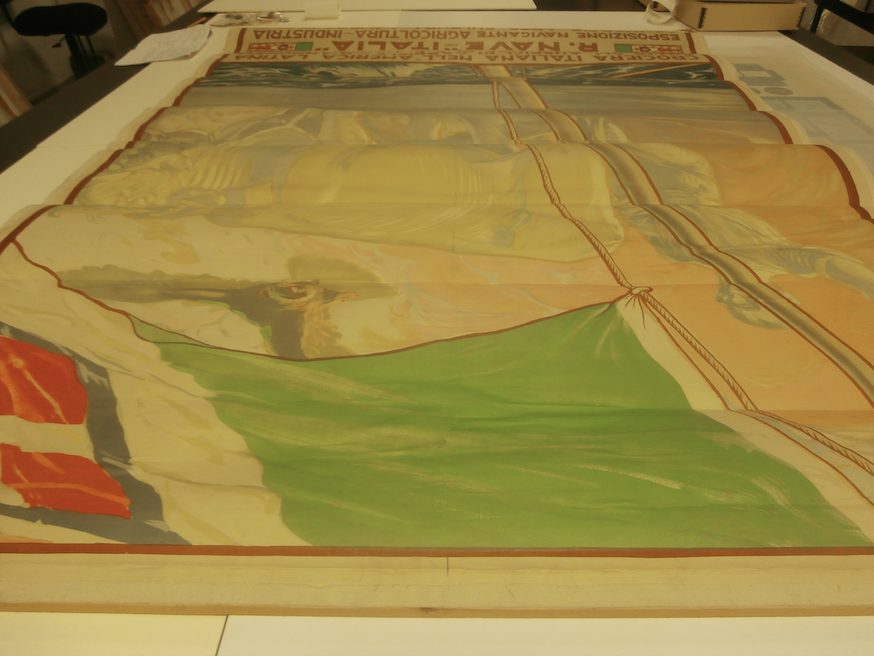The Wolfsonian occupies a 1920s Spanish-revival building in the iconic Art Deco district of Miami Beach. In the 1980s, businessman and philanthropist Mitchell Wolfson Jr. acquired the building, which originally belonged to a storage company, to host his collection of propaganda and design materials. In 1997, Wolfson donated his collection of nearly 110,000 objects — ranging from paintings and sculptures to teapots and postcards –to Florida International University, and it became the basis for a research center and museum devoted to the study of visual and material culture. In addition to the permanent collection and temporary exhibitions, the Wolfsonian has a unique resource for researchers interested in popular culture: a library with rare books and hundreds of periodicals that also includes postcards, advertisements, posters, music sheets, photographs, catalogues, pamphlets, calendars, and other ephemeral materials.

For scholars of Italian visual culture like myself, the Wolfsonian Library is an exceptional resource, as it is one of the most important repositories of Italian materials from 1880 to 1945 in the United States. At the Wolfsonian, for example, it is possible to consult and photograph physical copies of hard-to-find journals such as Emporium, Capitolium, La difesa della razza, La Rivista Illustrata del Popolo d’Italia, Stile, Domus, and La Civiltà, among many others. The library has an extensive collection of Italian posters, many of them dating from the fascist ventennio. Three boxes of postcards also provide invaluable insight into Italian mass culture in the modern period, and into the circulation of images after the unification of the country. An important section of the Wolfsonian’s Italian holdings comprise rare visual materials of the Republic of Saló, such as board games, propagandistic posters, and mural advertisements. The Wolfsonian has begun to digitize an important portion of their collection: it is possible to access scanned images of postcards, posters, and magazine covers, as well as rare books and catalogues.

At the Wolfsonian I conducted research on the impact of the Baroque style on the architecture of Rome from the late nineteenth century up until the late 1930s. I began my research by reviewing the Wolfsonian’s holdings of architectural portfolios of the early twentieth century, where I could find the projects of many built and unbuilt structures that referenced seventeenth-century precedents. Using the Wolfsonian’s postcard and journal collection, for example, I was able to gather important material on the popularity of the Baroque in the universal exhibitions organized in Turin and Milan in 1911. I also conducted an intensive review of architectural journals of the 1920s and 1930s, and found multiple references to both Baroque and neo-Baroque architecture in prominent journals such as Quadrante and Architettura e arti decorative. This allows me to prove that, contrary to what is usually argued, the Baroque was indeed widely debated in Italy during the interwar period as a viable architectural style for a variety of public buildings.

Another important resource for my research, and for scholars interested in the history of Italian modern art and design, is the Wolfsonian’s object collection. The second floor of the building, for example, exhibits the Art Deco furniture of the first class waiting room of Milan’s Stazione Centrale. Legend has it that Mr. Wolfson saved it at the last minute when it was about to be unceremoniously dumped.

A selection of the art and design collection is permanently on view at the Wolfsonian. The majority of it, however, is held off site. The registrar, Amy Silverman, accompanied me to storage so that I could take a closer look at materials that have not yet been digitized. I was elated to find, for example, a gigantic poster designed by Galileo Chini for the cruise of the Nave Italia, an Italian commercial ship that in 1924 visited several Latin American cities carrying a variety of artworks and commodities, as part of a project of fascistization of the local Italian communities. My article on the Nave Italia is forthcoming in Italian Studies, and the Wolfsonian’s poster will be a fantastic addition to the illustrations.

As a research collection and library, the Wolfsonian offers a variety of resources to help scholars make the most of their time there. One of the Wolfsonian’s curators, Dr. Silvia Barisione, specializes in Italian modern design, and provided me with invaluable suggestions for further avenues of research. The librarians, Drs. Frank Luca and Nicolae Harsanyi, assisted me in finding materials pertaining to my dissertation. The Academic Advisor, Dr. Jon Mogul, organized a Graduate Student Workshop on Visual and Material Culture Research Methods while I was in Miami Beach, enabling me to meet other scholars conducting research at the Wolfsonian and to present my preliminary findings.
The Wolfsonian was one of the last stops that I conducted while on my CIMA Travel Fellowship. As part of my doctoral research, I have studied material ranging from painting and sculpture to decorative arts, advertisements and exhibition plans, professional photographs and mass-produced postcards and posters, art historical journals and glossy magazines. I consulted a variety of archives in Rome, Milan, and Venice, but the Wolfsonian was crucial to gather material pertaining to mass and popular culture.
The library is open to scholars and general public by appointment only on weekdays 9:00 AM–5:00 PM, and Saturdays 9:00 AM–4:30 PM. To schedule a research visit, contact library@thewolf.fiu.edu.
